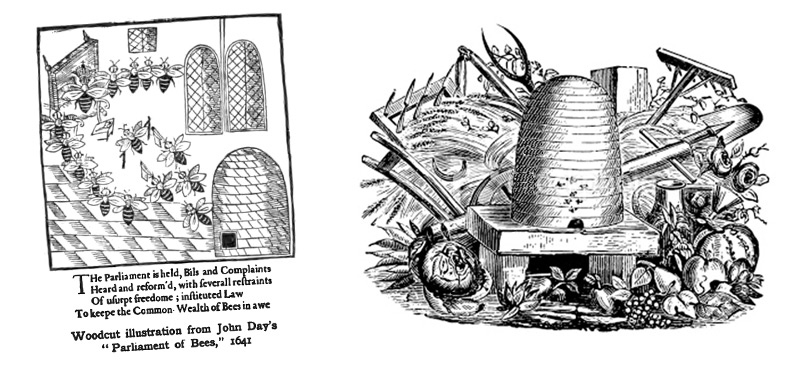
A long history
Honey collection is an ancient activity. Eva Crane's The Archaeology of Beekeeping states that humans began hunting for honey at least 10,000 years ago. She evidences this with a cave painting in Valencia, Spain. The painting is a Mesolithic rock painting, showing two female honey-hunters collecting honey and honeycomb from a wild bee nest. The two women are depicted in the nude, carrying baskets, and using a long wobbly ladder in order to reach the wild nest.
In ancient Egypt, honey was used to sweeten cakes and biscuits, and was used in many other dishes. Ancient Egyptian and Middle Eastern peoples also used honey for embalming the dead. Pliny the Elder devotes considerable space in his book Naturalis Historia to the bee and honey, and its many uses. The fertility god of Egypt, Min, was offered honey.
The art of beekeeping appeared in ancient China for a long time and hardly traceable to its origin. In the book "Golden Rules of Business Success" written by Fan Li (or Tao Zhu Gong) during the Spring and Autumn Period, there are some parts mentioning the art of beekeeping and the importance of the quality of the wooden box for bee keeping that can affect the quality of its honey.
Honey was also cultivated in ancient Mesoamerica. The Maya used honey from the stingless bee for culinary purposes and continue to do so today. The Maya also regard the bee as sacred (see Mayan stingless bees of Central America).
Some cultures believed honey had many practical health uses. It was used as an ointment for rashes and burns, and used to help soothe sore throats when no other medicinal practices were available.
In Hinduism, honey (Madhu) is one of the five elixirs of immortality (Panchamrita). In temples, honey is poured over the deities in a ritual called Madhu abhisheka. The Vedas and other ancient literature mention the use of honey as a great medicinal and health food.
In Jewish tradition, honey is a symbol for the new year, Rosh Hashanah. At the traditional meal for that holiday, apple slices are dipped in honey and eaten to bring a sweet new year. Some Rosh Hashanah greetings show honey and an apple, symbolizing the feast. In some congregations, small straws of honey are given out to usher in the new year.
The Hebrew Bible contains many references to honey. In the Book of Judges, Samson found a swarm of bees and honey in the carcass of a lion. The Book of Exodus famously describes the Promised Land as a "land flowing with milk and honey". However, the claim has been advanced that the original Hebrew (devash) actually refers to the sweet syrup produced from the juice of dates. Pure honey is considered kosher even though it is produced by a flying insect, a non-kosher creature; other products of non-kosher animals are non-kosher.
In Buddhism, honey plays an important role in the festival of Madhu Purnima, celebrated in India and Bangladesh. The day commemorates Buddha's making peace among his disciples by retreating into the wilderness. The legend has it that while he was there, a monkey brought him honey to eat. On Madhu Purnima, Buddhists remember this act by giving honey to monks. The monkey's gift is frequently depicted in Buddhist art.
In the Christian New Testament, Matthew, John the Baptist is said to have lived for a long period of time in the wilderness on a diet consisting of locusts and wild honey.
In Islam, there is an entire Surah in the Qur'an called al-Nahl (the Honey Bee). According to hadith, Prophet Muhammad strongly recommended honey for healing purposes. Qur'an promotes honey as a nutritious and healthy food. Below is the English translation of those specific verses.


